
This article is simply aimed to help beginning hobbyists that wish to set up a saltwater aquarium and also to help create a basic and essential knowledge base. Beginners should not be intimidated by anything they have heard about saltwater aquariums pertaining to its difficulty and complexity. This hobby is not difficult. One simply must have enough knowledge to effectively maintain a thriving aquarium.
First, you simply must think about what you would like to do and create a plan. Decide on what size aquarium you would like. In general when deciding on the size for saltwater aquariums, the bigger the better. A beginner should probably not choose an aquarium less than 30 gallons. For a delicate ecosystem, any imbalance created, such as an increase in nitrates due to a dead animal, would be diluted over a greater volume of water causing fewer dangers in a larger system. Problems can be solved much more easily within a larger aquarium.
Take a look at some saltwater animals. You can always check out a local store or simply go online. Decide what you would like to accomplish with your new aquarium. You may want to go for a tank full of large predator animals such as lionfish and groupers, or maybe you would like a small peaceful community. Also, deciding whether you would like to include corals or other photosynthetic animals will change the costs as well as the types of animals that you will be able to keep.
When considering the equipment needed to start a saltwater aquarium, some items are variable while others cannot be avoided. The importance of each of these items will be discussed later. Here is a list of what should be considered:
-A sturdy aquarium stand. Look for a stand that is in great condition and appears capable of holding the aquarium's weight
-A proper size protein skimmer is highly recommended. This is an essential part of a marine aquarium. Protein skimmers filter out organic wastes. Micro bubbles produced will bind to dissolved organic wastes in the water and rise and collect in a scum cup. This filtration system is no doubt a must in a marine aquarium.
-A proper size powerhead to maintain water flow. A powerhead is simply an in tank pump that creates current. You may need a higher flow model or more than one powerhead to achieve a proper amount of water movement in your aquarium depending on its size.
-A proper wattage heater will be necessary when room temperature is not high enough to maintain the correct temperature in the aquarium
-Mechanical filters can be used but are not completely necessary. These will simply keep the aquarium clean and make less effort for you. This is the standard filter you would hang on any aquarium and these come in a variety of shapes and sizes.
-The proper lighting for your aquarium will be determined by what you plan to keep in your aquarium. If you do not wish to keep corals, simple inexpensive fluorescent tube lighting will be sufficient. These lights are those that typically are included in tank packages. Soft corals will require stronger and more expensive compact fluorescent lighting and stony corals will require yet stronger and more expensive metal halide lighting.
-A hydrometer or refractrometer will allow you to check the levels of salt in the water. Refractrometers are significantly more expensive than hydrometers but are typically much more accurate.
-Chemical test strips will be needed to monitor your water chemistry. These are available in multi test strips to make this convenient. The most important tests to look for are nitrate, nitrite and ammonia.
Now, when considering setting up your aquarium, many one time items must be purchased in order to begin. Some are variable based on whether or not you have chosen to raise corals in your aquarium. Here is a list of what must be considered.
-Live Sand is highly recommended when aiming to start a reef system. A little less than a pound per gallon would be sufficient.
-Live Rock is also highly recommended for a reef system and can also be used in a fish only system. The amount of live rock is variable based on how large it is compared to it density as well as how much you would like to purchase based on how you would like the aquarium to appear. However, a nicely stocked system may include around a pound per gallon. "Live" is simply a termed used to describe sand and rock that is filled with tiny organisms and bacteria colonies. Detritivores found in live sand such as mysis shrimp, stomatella snails and bristleworms are all extremely useful is keeping a tank clean and healthy. Small organisms like copepods are also very helpful and also will serve as food for many saltwater fish and invertebrates.
-Regular saltwater aquarium sand should be purchased. There a few different types and grain sizes of sand that can be purchased. Choose based on the animals you intend to keep. For example, small burrowing bottom dwellers will prefer small grain sand. In most aquarium setups, fine aragonite sand will work very well. However, a good guideline would be 1 1/2 to 2 pounds of sand per gallon. Aim for around 4" of sand.
-The saltwater itself can purchased if you have a provider that sells premixed saltwater. However, if it does not, you may have to buy enough salt mix in order to make the amount of saltwater you will need. A Reverse Osmosis (RO) system may be a consideration as you will not want to continue purchasing distilled or RO water in order to top off your aquarium. These systems are typically installed underneath and sink and home models will allow for a spigot above the sink to draw the water. RO water is also drinkable. You cannot make saltwater with tap water even if you use a water conditioner. You will need to make your saltwater with RO or distilled water. You will also need to top off due to evaporation with RO or distilled water. You may be able to purchase RO water from your provider but although a larger investment, an RO system at home may save you a lot of money in the long run.
Ok now to start your aquarium. After you have taken everything home you will need to set up your aquarium that day if you have purchased live sand or live rock. The actual setup of the aquarium is quite simple.
You will want to place the live sand in piles as it comes out of the bag and not spread it out. Next, add all of your dry sand. Dry sand should be rinsed before added as it may contain a high amount of dust. This can be done by simply adding water to a bucket with the sand and mixing and pouring out the water when finished. In order to keep a more appealing look, the sand can be angled to be lower in the front and deeper in the back in order to keep a minimal amount against the front and visible part of the aquarium. Add live rock next and stack in a secure fashion. Dig rock at the base into the sand in order to prevent any toppling. Fill the aquarium after adding your rock. If you need to mix water, do this beforehand. Place a plate at the bottom of aquarium and poor water onto it to avoid stirring all the sand you just placed. You can then attach all equipment to the tank. You may want to allow any sand to settle before starting up your filter or protein skimmer.
After everything has settled you may start up all equipment. The aquarium may take on a very foggy look for the first few days. This is normal and will clear. It is advisable that you wait at least a month before adding anything to your new aquarium. This will allow a full nitrogen cycle in the water and prevent any chemical imbalances from killing any of your animals. Also, when live rock is moved and placed in a new environment, there will be some die-off of the microorganisms, bacteria and other little critters. That can easily cause a spike in ammonia, nitrates or nitrites.
After you have had the system running for about a month, all chemical levels should be tested before adding any animals. As a general rule for saltwater, nitrate, nitrite and ammonia levels should all be relatively close to 0 ppm. Salt levels or specific gravity, should be around 1.022-1.024. Temperature should remain around 78 degrees.
Now when you add animals, a good clean up crew is a great start and generally inexpensive and includes animals that are indicators of problems. Typically these will be sold with a variety of animals such as small hermit crabs, snails, serpent stars, and many others. Always ask for detritivores. These animals are extremely beneficial to your aquarium and will ensure its success. After you have allowed these animals to acclimate the environment and you see no problems, you can then add fish and more expensive species. Always research compatibility of saltwater creatures as there are many potential conflicts.
Helpful tips
Maintaining your aquarium after it is up and running:
-The most important part of maintenance is keeping up on regular water changes and topping off the aquarium. You should top off the aquarium to a designated point frequently with RO water (not salt) to keep the proper water level and salt content. A 20% water change of the aquarium should be made about every month (with mixed salt water to proper content level). Siphon the water out but do not siphon sand in a saltwater aquarium. Gravel vacuums are designed for freshwater rocks and one should never disturb the sand bed of a saltwater aquarium too much.
-Always make sure that protein skimmer scum cups are emptied regularly and that the skimmer is functioning properly. This is an important piece of equipment for a saltwater aquarium.
-Mechanical filters should also be cleaned and filters changed regularly
-A good scraper should be purchased to clean the glass of the aquarium
-Saltwater tanks with corals should run lights equivalent to what a typical day would be (10-12 hours), also if possible, turn lights on around the room with the aquarium in order to acclimate them to the light. Corals and fish react the way you would if someone flicked the light on while you were sleeping too!
-Watch for nuisance algae or bacteria. These are indicators that something has chemical is out of its range in the aquarium. This can be caused by a dirty skimmer or filter, dead animals, running lights too long, overfeeding, a lack of water changes as well as many other causes.
Adding Animals:
-Saltwater animals are very sensitive to changes in their environment and can be easily stressed which can lead to their death quite quickly.
-When you bring home a new addition, always float the bag in the water for at least 10 minutes to equalized temperature.
-The bag can then be cut open, and the top rolled down to make it float or clipped to the side of the aquarium.
-Water should be poured from the aquarium into the bag in small amounts every 5-10 minutes until the bag is full. Aim to make it take about an hour to fill the bag.
-Even more sensitive animals such as starfish should take extra long to complete this process. Aim for around 2 hours for those animals.
-Net an animal out of the bag and place into the aquarium after the process is complete. You should not add the bag's water to your aquarium as the water could have diseases in it that your aquarium is not immune to. If you cannot net the animal, add as little of the bag's water as possible. Simply pour the bag's water out in the sink.
Acceptable Chemical Levels
-If maintaining a fish only system a small amount of nitrate, nitrite and phosphate can be acceptable. Corals and invertebrates demand a much more stable environment. Phosphates and calcium are generally not on multi-purpose test strips but also do not need testing very often. Advanced aquarists may choose stony corals and thus must monitor calcium and alkalinity.
Item
Desired Levels
Nitrate
0 ppm
Nitrite
0 ppm
PH
8.1-8.3
Ammonia
0 ppm
Phosphate
0 ppm
Calcium
400 ppm or >
Specific Gravity (Salt Level)
1.021-1.024
Temperature (F)
75-80
This is my first article to write for this site. If you have any questions, suggestions, or would like anything added to this or perhaps a specific topic regarding this for more information, please do not hesitate to post a comment so I know about it. Thank you.
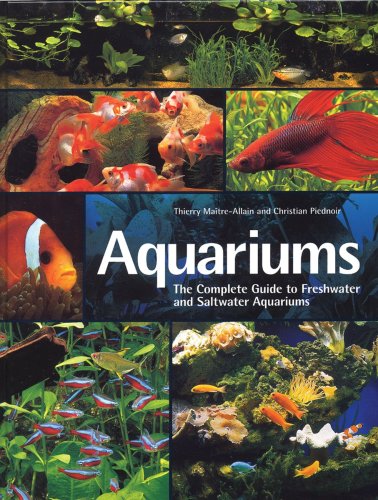 9 Common Mistakes of Freshwater Fish Owners
Keeping fish in an aquarium
9 Common Mistakes of Freshwater Fish Owners
Keeping fish in an aquarium
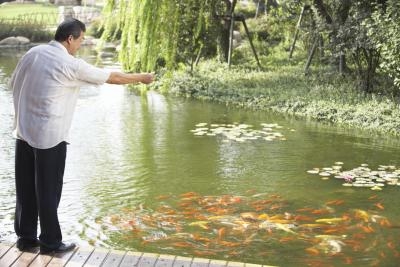 What Are Some Fish for an Outdoor Fish Pond?
What Are Some Fish for an Outdoor Fish Pond?
What Are Some Fish for an Outdoor Fish Pond?
What Are Some Fish for an Outdoor Fish Pond?
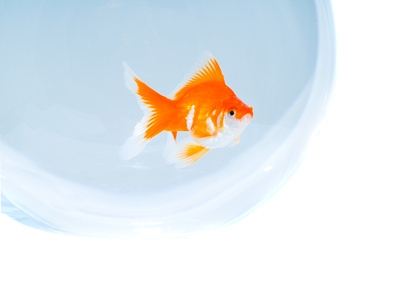 How to Make Fish Survive in a Glass Bowl
How to Make Fish Survive in a Glass Bowl
How to Make Fish Survive in a Glass Bowl
How to Make Fish Survive in a Glass Bowl
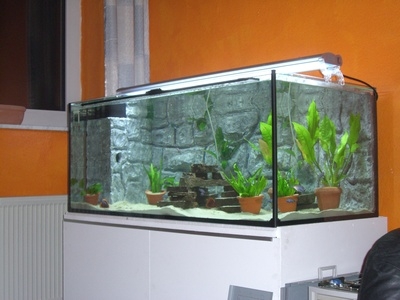 What Fish Can Live in Brackish Water
What Fish Can Live in Brackish Water
W
What Fish Can Live in Brackish Water
What Fish Can Live in Brackish Water
W
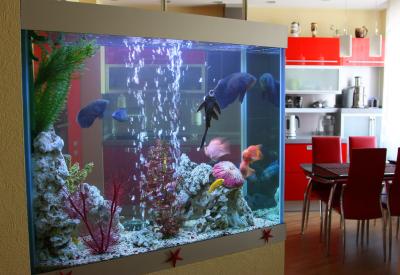 List of Aggressive Tropical Freshwater Fish
List of Aggressive Tropical Freshwater Fish
List of Aggressive Tropical Freshwater Fish
List of Aggressive Tropical Freshwater Fish
Copyright © 2005-2016 Pet Information All Rights Reserved
Contact us: www162date@outlook.com